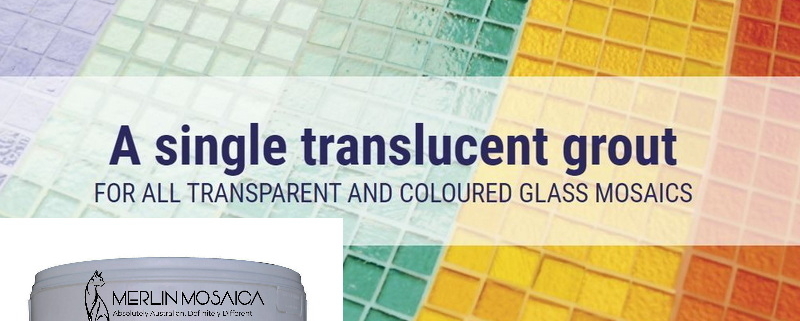Litokol Epoxy Grout
LITOKOL EPOXY GROUT – WHAT IS IT REALLY?
There has been some talk recently regarding the Litokol Starlike® EVO Epoxy Grout and the TRANSLUCENT GLASS GROUT – Litokol Starlike® Crystal EVO Epoxy Grout.
I thought I would clear up any confusion regarding what these products are, how and when they should be used and by whom, and why it may seem expensive at first glance.
NOTE: The information contained herein regarding Epoxy Grout mainly relates to the Litokol Starlike® EVO and the Litokol Starlike® Crystal EVO Epoxy Grouts. Other brands may differ.
Litokol is an Italian company that started producing ceramic adhesives in 1968. The company is passionate about using innovation to drive eco-sustainability and safety. They have developed a range of products with the lowest VOC emission rates ever recorded, which are non-corrosive, non-toxic, and non-hazardous to the environment, and not subject to restrictions for road, rail, air, and sea freight.
Litokol produces two Epoxy grouts covered by this article: Litokol Starlike® EVO Epoxy Grout (Starlike) and the translucent Litokol Starlike® Crystal EVO Epoxy Grout (Crystal). I should point out that they are two completely different products, although they do have some features in common.
Epoxy and Cementitious Grout – What are they?
Cementitious grout is basically a mixture of cement and water and comes in sanded and un-sanded varieties. It is used to fill voids in the tiling membrane. It is relatively cheap, readily available at most hardware stores, and easy to use.
Typically, cementitious grout contains Portland cement, limestone, quartz, and other minerals. It is a known carcinogen and the dry mix may cause cancer if inhaled, and can also cause eye and skin irritations. The wet mix is caustic, abrasive, absorbs moisture and is harmful to the skin.
NOTE: Benefits & Issues of cementitious grouts mentioned are of a general nature only. I am aware that there are products available that address some of the issues described. They are mentioned here as factors to consider when making choices.
Benefits of Cementitious grout:
- very cheap – useful for beginners
- readily available
- non-slumping, so can be applied vertically
- useful for interior works
- can be used for exterior works, or even birdbaths, if used with an appropriate additive or sealant (Some products on the market may have addressed this)
NOTE: Penetrating sealers should be re-applied every 1-2 years - 20-30 minute working (open) time
Potential Issues with Cementitious grout:
- inflexible and thus subject to cracking and over time
- may fall out, particularly if the substrate is subjected to flexion
- susceptible to bacteria if exposed to moisture, resulting in mould growth
- can effloresce (show a whitish-grey “bloom” on the surface). Particularly noticeable on darker colours
- porous unless fully sealed, so may stain over time
- if not correctly sealed, it can become quite damp, which can lead to tiles falling off if the incorrect adhesive is used
- alkaline – so not suitable for use with mirrors
- will not bond to metal
- carcinogenic. Care should be taken to use a P2/N95 mask when dealing with dry grout
- the wet Portland cement mix is caustic, abrasive and absorbs moisture. It also contains small amounts of hexavalent chromium [Cr(VI)], a toxin that is harmful to the skin. As such, the use of gloves and/or a barrier cream is advisable
- unsanded grout may crack if used in joints of more than 3mm
- sanded grout has less tendency to crack, but shouldn’t be used in joints of over 20mm
Epoxy grout is made from two-part epoxy resins. These are mixed with filler powder. This grouting option has been used for renovation companies for many years because of its durability, non-porous, and stain-resistant nature. It is easy to use, although the methods are different to cementitious grout. Yes, it is more expensive than cementitious grout, but does have several advantages.
Litokol epoxy grouts are safe and non-toxic to installers, consumers and the environment. Starlike and Crystal translucent) grouts are the safest grouts in the industry, offering the highest possible performance while being trusted and respected by industry professionals worldwide.
In Australia, Starlike and Crystal grouts are both available here at Merlin Mosaica.
NOTE: Benefits listed below pertain to both the Starlike & Crystal grouts, except where indicated. Other brands may differ.
Benefits of Starlike and Crystal grouts:
- Non-hazardous to the environment. The catalyst component is classified as an irritant only
- Ultra-low emission of VOCs
- Does not effloresce
- Useful for interior or exterior applications, birdbaths, swimming pools, spas or jacuzzis with no special treatment
- Will bond to polystyrene, ceramic/porcelain, glass, metal, natural stones, and resin agglomerates
- Starlike is made of more than 10% recycled materials. Crystal is made of more than 50% recycled materials
- Starlike is suitable for use with (Litokol branded) glitter additives (including a glow-in-the dark additive for SOME colours). Glitter is not suitable for use with the Crystal grout
- 1 hour working (open) time at 23°C. Set to trafficable level in 24 hours
- Reaches full cure after 5 days
- Can be applied in temperatures from 10°C to 30°C (optimal 18°C to 23°C)
- Contrary to most other epoxy grouts on the market, they will not stain porous tiles
- Shelf-life is 24 months in original packaging
- Extremely easy to use
- Suitable for submersion in salt-water
- Non-slumping, so can be applied vertically
- Starlike is suitable for joint lines of up to 15mm wide. Crystal is recommended for joints of 3mm or less (colour transference effect diminishes over wider joints)
- Non-porous
- Neutral curing, so suitable for use with mirrors
- Does not crack
- Will not fall-out
- Bacteriostatic, so does not attract mould
- Stain-resistant
- High chemical resistance
- Able to withstand a high degree of temperature fluctuation
- Protects the colours of grouting from yellowing caused by sunlight. The only UV-resistant epoxy sealant available on the market (as at Nov 2021)
- Assessed as food safe (according to European regulations)
- Starlike can be used as:
- a grout,
- a tile adhesive (NOTE: The Translucent form cannot be used as an adhesive) and
- a render on vertical surfaces, with no slippage or slumping
Potential Issues with Starlike and Crystal grouts:
- more expensive than cementitious grout (this applies to all epoxy grouts, not just Litokol)
- you MUST ensure that epoxy grouts are THOROUGHLY mixed. Scrape down the sides of the container during the mixing process. Failure to do so may lead to issues in curing.
- smallest container size is 1kg for the Crystal and some Starlike colours (Absolute White, Pearl Grey & Graphite). For other colours of Starlike, 2.5kg is the smallest size option.
NOTE: Testing indicates that sealing the catalyst in an airtight manner will maintain its useability (a double ziplock bag, returned to the original container with the lid firmly re-applied is sufficient). As these products are a construction product, they are packaged for ease of use (i.e. single use application). Litokol do provide the correct mixiing ratios in teir Technical Data Sheet, which I include here.
Mixing Ratios simplified:
- Component A – 93.7 parts by weight, Component B – 6.3 parts by weight
- A kitchen scale is great to measure out the grout
- If you calculate that you need 100 grams of grout, weigh out 93.7 grams Part A, and 6.3 grams Part B
- If you need, for example, 145 grams of grout, you will need:
- (145/100) x 93.7 Part A, (i.e 1.45 x 93.7 = 135.8 grams) and
- (145/100) x 6.3 Part B, (i.e 1.45 x 6.3 = 9.2 grams)
When is Starlike Grout a good option?
Starlike and Crystal are especially recommended for exterior and/or submersible applications, as they will handle just about any weather condition. They are recommended for use by those with extreme toxic sensitivities, or in areas where environmental impacts are particularly important. They are the grout of choice for use with mirrors.
NOTE: For those new to mosaics, I would suggest using a cementitious grout due to its relatively low cost.
Translucent Grout – why all the hype?
There has been a lot of talk about clear grout, or translucent grout – why?
Firstly, there is no such thing as clear grout. The Starlike® Crystal EVO Translucent grout (Crystal) is a different form of Epoxy grout. It has a colour not unlike frosted glass, and allows light to pass though it.
Crystal has been especially formulated to work in concert with translucent or transparent glass. It contains fine grade glass bead aggregates that bounce colour around allowing it to “absorb” the colour of the clear glass or glass tiles, which therefore alter its appearance, reflecting the colour of surrounding tesserae to the eye.
Crystal really comes into its own when used in mosaic works where multiple grout colours would normally be used. The translucent grouting has a neutral tone that highlights the colour of artistic mosaics, without interfering with the composition.
Crystal is made from more than 50% recycled material.
- What Substrates are suitable? Crystal is a whitish product that allows light to pass through, but you can’t see through it. Best results are obtained when used on transparent substrates such as glass and plexiglass (acrylic), which may eventually be backlit by a light source. In this case, the mosaic must be glued using an appropriate clear adhesive (I recommend either the Soudal Crystal Fix-all SMX Polymer or Prep Multi-Use Adhesive). Crystal can also be used on mirror, timber, metal, fibreglass, acrylic, glass, or cement to great effect. On opaque surfaces, best results are achieved if a white adhesive is used.
- Can you use it with all tesserae? Technically, Crystal will work with all tesserae (glass, ceramic, porcelain, and other materials), however the full colour transference effect is only seen when working with transparent or translucent glass.
- Can you use it on wide grout lines? Crystal has been designed to work optimally with grout lines of 3mm or less. At this size, the colour transference effect is most noticeable.
- Is it stain-resistant? As with the Starlike grout, Crystal does not crack and is bacteriostatic. It does not absorb liquids and dirt and can therefore be easily washed, while also preventing the spread of mould and fungi, ensuring totally hygienic grouting.
- How easy is it to apply really? This product is incredibly easy to apply and clean-up. Cleaning off epoxy grouts should be done as soon as you finish applying the product – DO NOT WAIT FOR A HAZE TO FORM (as with cementitious grouts). Both Starlike and Crystal grouts include a cleaning agent, which reacts with the water used in clean-up, making it very easy to clean-off. Clean off excess grout with a gloved hand or rubber kidney, then lightly rub-over with a wet white scourer pad (rinsing frequently). If you feel any “drag” or stickiness on the scourer pad, add more water. The product will emulsify (turn white) – this is perfectly normal, and is just the cleaning agent reacting with the water. Once you have cleaned off all product, wipe over with a squeezed-out sponge – job done!
- Shelf Life? All Litokol Epoxy Grouts have a shelf life of 24 months.
NOTE: These products are manufactured for use in the construction industry. They are intended to have the entire pre-measured containers used at once. However, if apportioning out the contents, care must be taken to store the unused hardener sachet in an air-tight container, such as a double Ziplock bag (readily available from supermarkets) and return this to the original tub. Make sure you follow the percentages noted above. These are also included in the product listing on this website.
Litokol grouts available here






Leave a Reply
Want to join the discussion?Feel free to contribute!